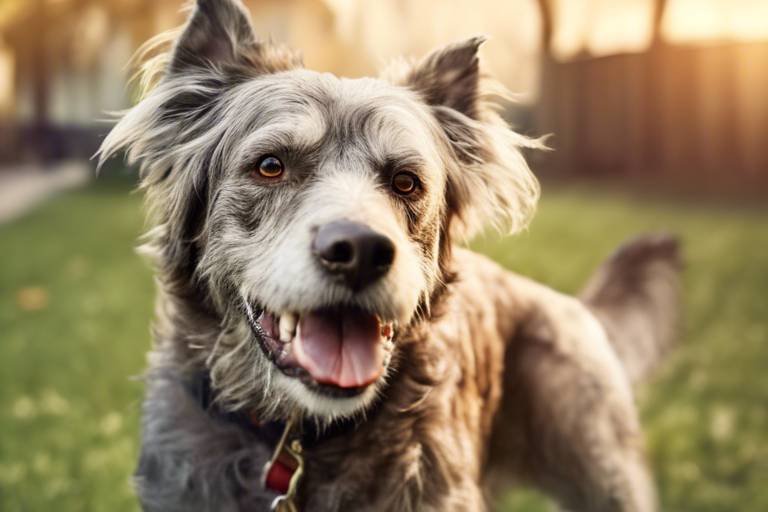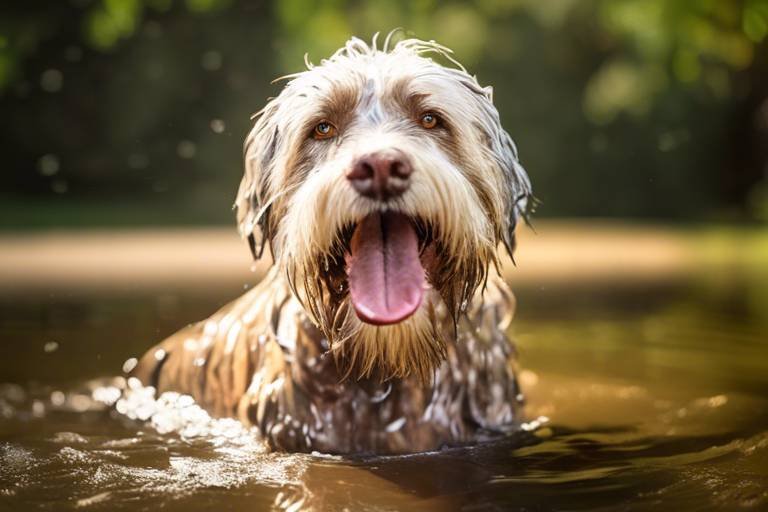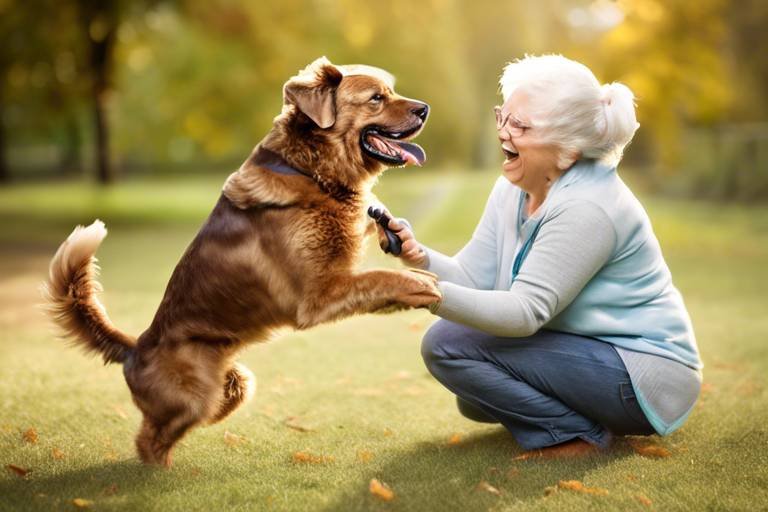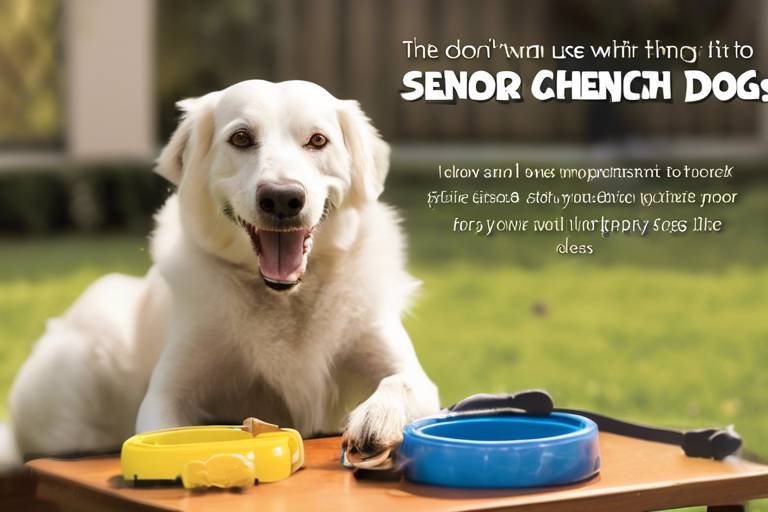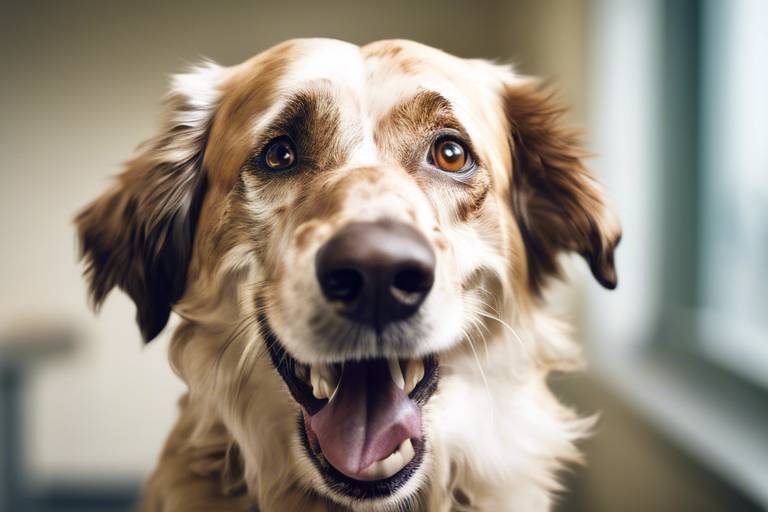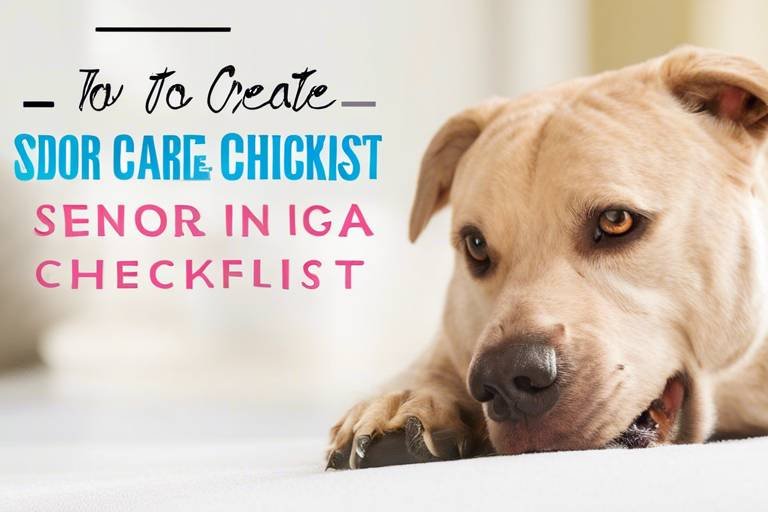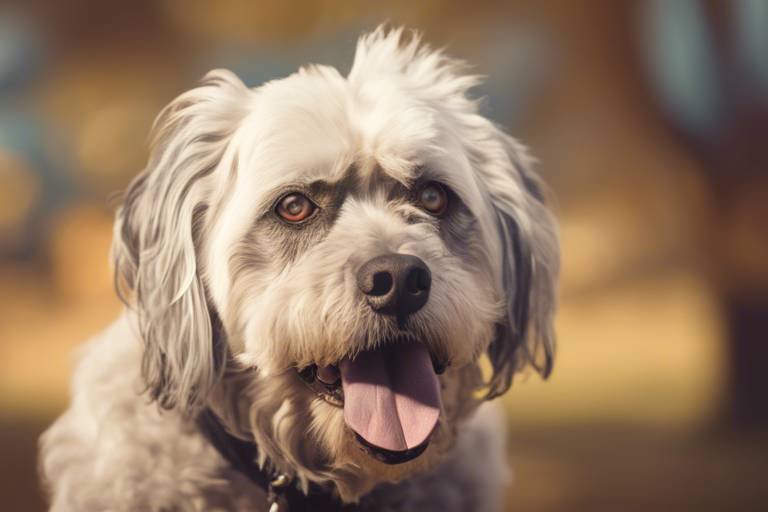How to Handle Senior Pets with Separation Anxiety
As our furry companions age, they may develop certain quirks and behaviors that can be challenging for pet owners to navigate. One of the most common issues faced by senior pets is separation anxiety. This emotional condition can leave our beloved animals feeling distressed and uneasy when left alone. In this article, we will explore effective strategies to manage separation anxiety in senior pets, ensuring their comfort and well-being while you are away. By understanding their needs and implementing practical solutions, you can help your pet feel safe and secure, even in your absence.
Separation anxiety in senior pets can manifest in various ways. Recognizing the signs and understanding the underlying causes is crucial for effective management and support for your beloved animal. Often, this anxiety stems from a combination of factors including age-related changes, health issues, and shifts in routine. Just like humans, pets can experience stress and anxiety, and it's essential to approach their care with empathy and understanding.
Identifying the signs of anxiety is essential to address the issue effectively. Common behaviors include:
- Excessive barking or howling when left alone.
- Destructive actions, such as chewing furniture or scratching doors.
- Changes in appetite, including overeating or refusing food.
This section will outline these symptoms in detail, helping you to recognize when your pet may be struggling with anxiety.
Senior pets may exhibit behavioral changes that indicate anxiety. These changes can include:
- Increased clinginess: Your pet may follow you around the house more than usual.
- Restlessness: They might seem unable to settle down, pacing or moving from room to room.
- Unusual vocalizations: This can range from whining to barking, especially when you prepare to leave.
Understanding these changes helps in developing a tailored approach to their care, ensuring they feel loved and secure.
Physical manifestations of anxiety can include pacing, trembling, and excessive grooming. Recognizing these symptoms is important for timely intervention and ensuring the pet's overall health and happiness. If you notice your pet exhibiting these behaviors, consider it a red flag that they may be struggling emotionally.
Emotional signs of anxiety may involve withdrawal or aggression. Being aware of these indicators can aid in creating a supportive environment for your senior pet, reducing their stress levels. For instance, if your pet is suddenly less affectionate or more irritable, it may be time to reassess their environment and routine.
The environment plays a significant role in a pet's anxiety levels. Factors such as noise, unfamiliar surroundings, and changes in routine can contribute to heightened anxiety in senior pets. Consider the following:
- Are there loud noises, like construction or fireworks, that could be affecting your pet?
- Have there been recent changes in your household, such as moving or new family members?
- Is your pet's routine consistent, or has it changed recently?
These environmental factors can significantly impact your pet's emotional state, so it's vital to create a calming atmosphere.
Establishing a secure and comforting environment can significantly alleviate anxiety. Here are some tips on how to create a safe haven for your senior pet during your absence:
Incorporating familiar items, such as blankets or toys, can help soothe anxious pets. These comfort items can provide a sense of security and familiarity when they are alone. Think of them as a teddy bear for your pet; they can offer comfort and reassurance when you’re not there.
Designating a quiet area in your home as a safe zone can help your pet feel more secure. This space should be free from noise and distractions, allowing them to relax when you're away. Consider using a cozy bed or crate, and make sure it’s stocked with their favorite toys and blankets.
Implementing training techniques can help reduce separation anxiety in senior pets. Gradual desensitization and positive reinforcement are two effective methods to create a more confident pet. These techniques not only help your pet cope but also strengthen the bond between you and your furry friend.
Gradual desensitization involves slowly acclimating your pet to being alone. Start by leaving them alone for short periods and gradually increasing the time. This technique helps them build confidence and reduces anxiety over time, making separations easier for both you and your pet.
Using positive reinforcement techniques can encourage calm behavior during separations. Rewarding your pet for staying calm when you leave can help reinforce desirable behaviors and reduce anxiety in the long run. It’s like giving them a little treat for being brave!
In some cases, professional assistance may be necessary. Consulting a veterinarian or animal behaviorist can provide additional support and treatment options for your senior pet's anxiety. They can help identify any underlying medical issues that might be contributing to your pet's distress.
A veterinary consultation can provide insights into potential medical issues contributing to anxiety. This approach ensures a comprehensive understanding of your pet's health and behavior, allowing for a more effective treatment plan.
Behavioral therapy can offer specialized strategies for managing anxiety. Working with a qualified professional can equip you with effective tools and techniques tailored to your senior pet's needs. It’s like having a personalized plan to help your pet thrive!
Q: How can I tell if my senior pet has separation anxiety?
A: Look for signs such as excessive barking, destructive behavior, changes in appetite, and unusual clinginess. If your pet exhibits these behaviors when left alone, they may be experiencing separation anxiety.
Q: Can separation anxiety in senior pets be treated?
A: Yes, separation anxiety can often be managed through a combination of behavioral training, environmental modifications, and, in some cases, medication prescribed by a veterinarian.
Q: What should I do if my pet becomes destructive when I leave?
A: Consider creating a safe space for your pet with comfort items and toys, and gradually desensitize them to your departures. Consulting a professional can also provide additional strategies tailored to your pet's needs.
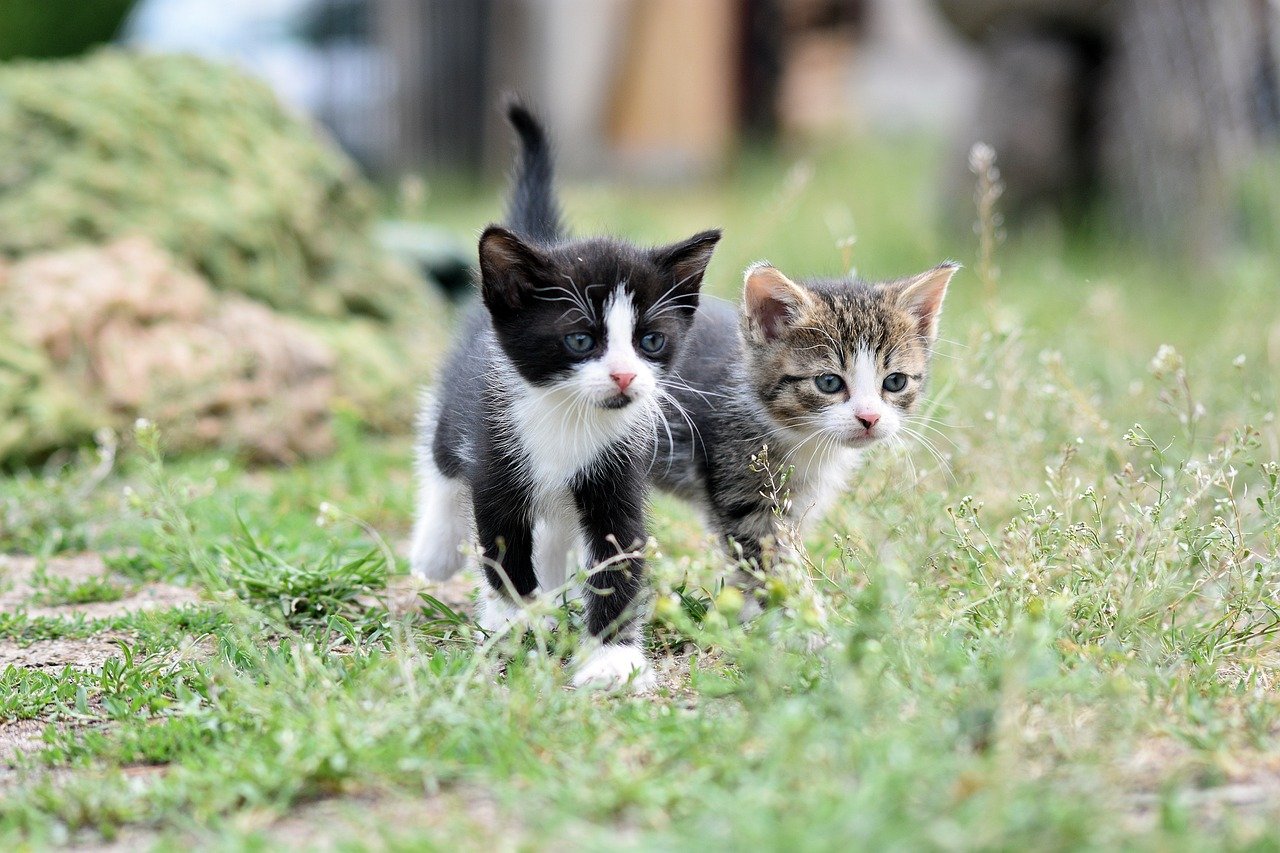
Understanding Separation Anxiety
This article explores effective strategies for managing separation anxiety in senior pets, ensuring their comfort and well-being while you are away. Discover tips, techniques, and insights to support your furry companions.
Separation anxiety is a common issue that many senior pets face, and it can be heart-wrenching to witness. As our furry friends age, they may become more sensitive to changes in their environment or routine, leading to feelings of anxiety when left alone. Understanding the underlying causes of this anxiety is crucial for providing the best care possible. It’s essential to recognize that separation anxiety is not just a phase; it can be a serious condition that affects your pet’s quality of life.
Senior pets may experience separation anxiety due to various factors, including changes in their living situation, loss of a companion, or even physical ailments that make them feel more vulnerable. For instance, if a pet has recently lost a fellow pet or experienced a significant life change, they may become more attached and fearful of being left alone. This attachment can lead to a cycle of anxiety that is difficult to break.
Common signs of separation anxiety include:
- Excessive barking or howling when left alone.
- Destructive behaviors, such as chewing furniture or scratching doors.
- Changes in appetite, either eating too little or too much.
Recognizing these signs early on can help you develop a tailored approach to your pet's care. It’s important to note that each pet is unique; what triggers anxiety in one may not affect another in the same way. Therefore, observing your pet’s behavior closely is essential for effective management.
Additionally, understanding the emotional landscape of your senior pet is crucial. They may not only exhibit physical symptoms but also emotional indicators such as withdrawal or aggression. These behaviors can stem from a feeling of insecurity or fear of abandonment. By being aware of these signs, you can create a more supportive environment that helps alleviate their stress levels.
Another significant factor to consider is the environment in which your pet lives. Noise from outside, unfamiliar surroundings, or changes in routine can all contribute to heightened anxiety. For instance, if you recently moved to a new home or have had renovations done, your pet might feel unsettled by the changes. Therefore, creating a stable and familiar environment is vital for their mental health.
In summary, understanding separation anxiety in senior pets involves recognizing the signs, identifying potential triggers, and being aware of how changes in their environment can impact their emotional well-being. By taking the time to understand your pet’s needs and behaviors, you can better support them through their anxiety, ensuring they feel secure and loved even when you’re not around.
Here are some common questions pet owners have regarding separation anxiety in senior pets:
- What are the first signs of separation anxiety? Look for excessive barking, destructive behavior, and changes in appetite.
- Can separation anxiety be cured? While it may not be completely cured, it can be managed effectively with training and environmental adjustments.
- Should I consult a vet for my pet's anxiety? Yes, a veterinarian can help identify any underlying health issues and recommend appropriate treatments.
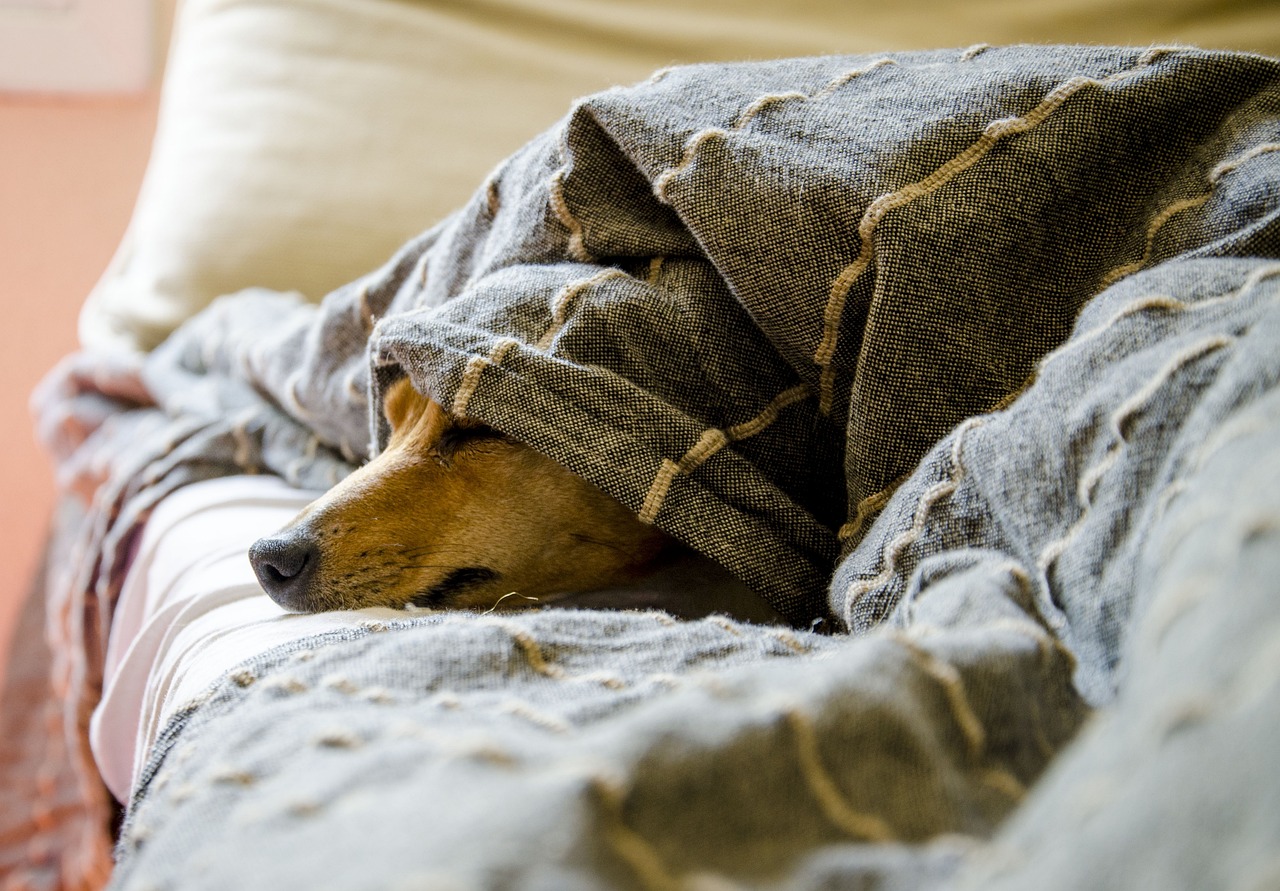
Signs of Anxiety in Senior Pets
This article explores effective strategies for managing separation anxiety in senior pets, ensuring their comfort and well-being while you are away. Discover tips, techniques, and insights to support your furry companions.
Separation anxiety in senior pets can manifest in various ways. Recognizing the signs and understanding the underlying causes is crucial for effective management and support for your beloved animal.
Identifying the signs of anxiety is essential to address the issue effectively. Senior pets may exhibit a range of behaviors that can signal their discomfort when left alone. Common signs include:
- Excessive barking or howling: If your senior pet seems to bark or vocalize more than usual when you leave, this could be a cry for help.
- Destructive behavior: Chewing on furniture or scratching at doors can indicate that your pet is anxious and trying to escape or express frustration.
- Changes in appetite: A sudden decrease or increase in eating habits can be a telltale sign of emotional distress.
These behaviors can often be distressing to witness, and understanding them can help you provide the right support. For instance, if your furry friend is suddenly chewing on your favorite shoes, it might not just be a mischievous act but a sign of anxiety. It’s essential to pay close attention to these behaviors to identify patterns and triggers.
Senior pets may exhibit behavioral changes that indicate anxiety. This includes increased clinginess, restlessness, or unusual vocalizations. For example, if your dog follows you from room to room or seems unable to settle down, it might be feeling insecure. Understanding these changes helps in developing a tailored approach to their care. Think of it as your pet's way of communicating their feelings. Just like how we might fidget or seek comfort from loved ones when we feel uneasy, our pets do the same.
Physical manifestations of anxiety can include pacing, trembling, and excessive grooming. If you notice your pet pacing back and forth or trembling when you prepare to leave, these are significant signs of stress. Additionally, if your cat is grooming itself to the point of creating bald spots, this could indicate anxiety. Recognizing these symptoms is important for timely intervention and ensuring the pet's overall health and happiness. Just like humans, pets can develop habits that are detrimental to their well-being when they are anxious, so it’s crucial to act swiftly.
Emotional signs of anxiety may involve withdrawal or aggression. If your normally friendly pet suddenly becomes withdrawn or defensive, it’s essential to take note. Being aware of these indicators can aid in creating a supportive environment for your senior pet, reducing their stress levels. Think of it this way: if you were feeling anxious, you might want to retreat to a safe space. Your pet is no different, and recognizing their emotional state can help you provide the comfort they need.
The environment plays a significant role in a pet's anxiety levels. Factors such as noise, unfamiliar surroundings, and changes in routine can contribute to heightened anxiety in senior pets. For instance, loud thunder or fireworks can be particularly distressing. If you’ve recently moved or had a significant change in your household, your pet may be feeling the impact. It’s essential to create a stable and quiet environment that fosters a sense of security for your furry friend.
Establishing a secure and comforting environment can significantly alleviate anxiety. This section will provide tips on how to create a safe haven for your senior pet during your absence.
Incorporating familiar items, such as blankets or toys, can help soothe anxious pets. These comfort items can provide a sense of security and familiarity when they are alone.
Designating a quiet area in your home as a safe zone can help your pet feel more secure. This space should be free from noise and distractions, allowing them to relax when you're away.
Implementing training techniques can help reduce separation anxiety in senior pets. This section discusses various methods, including gradual desensitization and positive reinforcement, to create a more confident pet.
Gradual desensitization involves slowly acclimating your pet to being alone. This technique helps them build confidence and reduces anxiety over time, making separations easier for both you and your pet.
Using positive reinforcement techniques can encourage calm behavior during separations. Rewarding your pet for staying calm can help reinforce desirable behaviors and reduce anxiety in the long run.
In some cases, professional assistance may be necessary. This section will discuss when to consult a veterinarian or animal behaviorist for additional support and treatment options for your senior pet's anxiety.
A veterinary consultation can provide insights into potential medical issues contributing to anxiety. This approach ensures a comprehensive understanding of your pet's health and behavior.
Behavioral therapy can offer specialized strategies for managing anxiety. Working with a qualified professional can equip you with effective tools and techniques tailored to your senior pet's needs.
Q: How can I tell if my senior pet has separation anxiety?
A: Look for signs such as excessive barking, destructive behavior, changes in appetite, and unusual clinginess. If your pet seems distressed when you leave, it may be experiencing separation anxiety.
Q: What can I do to help my pet feel more comfortable when I leave?
A: Create a safe space with comfort items, practice gradual desensitization, and consider using calming aids like pheromone diffusers or anxiety wraps.
Q: When should I seek professional help for my pet's anxiety?
A: If your pet's anxiety is severe or if their behavior is causing harm to themselves or your home, it’s time to consult a veterinarian or an animal behaviorist for guidance.
Behavioral Changes
When it comes to our beloved senior pets, behavioral changes can be one of the most telling signs of separation anxiety. As they age, pets often become more sensitive to their surroundings and the absence of their human companions. You might notice that your once independent furry friend is now following you around the house, unable to settle down when you’re preparing to leave. This clinginess can be a clear indicator that they are feeling anxious.
In addition to increased clinginess, you may observe restlessness in your senior pet. This might manifest as pacing back and forth, an inability to find a comfortable spot, or constantly looking towards the door as if expecting you to return at any moment. Such behaviors can be distressing to witness, and they often stem from a deep-seated fear of being left alone.
Another common behavioral change is unusual vocalizations. While some pets might have always been chatty, an increase in barking, whining, or howling can signal that they are struggling with anxiety. It's as if they are trying to communicate their discomfort and loneliness, and it's essential to pay attention to these vocal cues.
To help you better understand these behavioral changes, here’s a quick overview of some common signs:
- Increased clinginess: Seeking constant companionship and following you around.
- Restlessness: Pacing or an inability to settle down.
- Unusual vocalizations: Excessive barking, whining, or howling when you leave.
Recognizing these behavioral changes is crucial because it allows you to tailor your approach to your pet’s care. For instance, if your pet is particularly clingy, you might want to gradually increase the time they spend alone, helping them adjust to your absences. Understanding these signs not only fosters a deeper bond between you and your pet but also enables you to implement effective strategies to ease their anxiety.
Q: How can I tell if my senior pet is experiencing separation anxiety?
A: Look for signs such as excessive clinginess, restlessness, unusual vocalizations, and destructive behaviors when you leave. If your pet seems anxious or distressed during your departures, they may be suffering from separation anxiety.
Q: What are some effective ways to help my pet cope with separation anxiety?
A: Gradual desensitization, creating a safe space, and incorporating comfort items can help alleviate anxiety. Training techniques that involve positive reinforcement can also encourage calm behavior during separations.
Q: Should I consult a veterinarian if my pet shows signs of anxiety?
A: Yes, if your pet's anxiety seems severe or is affecting their health, consulting a veterinarian or animal behaviorist is a good idea. They can provide insights into potential medical issues and recommend appropriate treatments.
Physical Symptoms
This article explores effective strategies for managing separation anxiety in senior pets, ensuring their comfort and well-being while you are away. Discover tips, techniques, and insights to support your furry companions.
Separation anxiety in senior pets can manifest in various ways. Recognizing the signs and understanding the underlying causes is crucial for effective management and support for your beloved animal.
Identifying the signs of anxiety is essential to address the issue. Common behaviors include excessive barking, destructive actions, and changes in appetite. This section will outline these symptoms in detail.
Senior pets may exhibit behavioral changes that indicate anxiety. This includes increased clinginess, restlessness, or unusual vocalizations. Understanding these changes helps in developing a tailored approach to their care.
When it comes to of separation anxiety in senior pets, it's essential to be vigilant. These symptoms often manifest in ways that can be alarming to pet owners. For instance, you might notice your furry friend pacing back and forth, which can be a clear indicator of distress. This repetitive behavior often signifies that they are feeling overwhelmed and unsure of their surroundings.
Another common physical symptom is trembling. If your senior pet starts shaking, even when the temperature is comfortable, it could be a sign that they are experiencing anxiety. Trembling can also be accompanied by excessive grooming, where your pet licks or bites at their fur as a way to cope with their anxiety. This behavior can lead to skin irritations and further health issues, so it's crucial to address the root cause.
It's also worth noting that some pets may exhibit loss of appetite or changes in their eating habits during times of anxiety. If your pet suddenly shows disinterest in food or their usual treats, it could be a sign that they are feeling stressed or anxious. Keeping an eye on their eating habits can provide valuable insights into their emotional state.
In summary, the physical symptoms of separation anxiety can vary widely, but they often include:
- Pacing
- Trembling
- Excessive grooming
- Changes in appetite
Recognizing these symptoms early on is vital for timely intervention. If you observe these behaviors, consider creating a calming environment or seeking professional help to ensure your senior pet's overall health and happiness.
Emotional signs of anxiety may involve withdrawal or aggression. Being aware of these indicators can aid in creating a supportive environment for your senior pet, reducing their stress levels.
The environment plays a significant role in a pet's anxiety levels. Factors such as noise, unfamiliar surroundings, and changes in routine can contribute to heightened anxiety in senior pets.
Establishing a secure and comforting environment can significantly alleviate anxiety. This section will provide tips on how to create a safe haven for your senior pet during your absence.
Incorporating familiar items, such as blankets or toys, can help soothe anxious pets. These comfort items can provide a sense of security and familiarity when they are alone.
Designating a quiet area in your home as a safe zone can help your pet feel more secure. This space should be free from noise and distractions, allowing them to relax when you're away.
Implementing training techniques can help reduce separation anxiety in senior pets. This section discusses various methods, including gradual desensitization and positive reinforcement, to create a more confident pet.
Gradual desensitization involves slowly acclimating your pet to being alone. This technique helps them build confidence and reduces anxiety over time, making separations easier for both you and your pet.
Using positive reinforcement techniques can encourage calm behavior during separations. Rewarding your pet for staying calm can help reinforce desirable behaviors and reduce anxiety in the long run.
In some cases, professional assistance may be necessary. This section will discuss when to consult a veterinarian or animal behaviorist for additional support and treatment options for your senior pet's anxiety.
A veterinary consultation can provide insights into potential medical issues contributing to anxiety. This approach ensures a comprehensive understanding of your pet's health and behavior.
Behavioral therapy can offer specialized strategies for managing anxiety. Working with a qualified professional can equip you with effective tools and techniques tailored to your senior pet's needs.
Q: What are the common signs of separation anxiety in senior pets?
A: Common signs include excessive barking, pacing, trembling, and changes in appetite. It's essential to observe your pet's behavior closely.
Q: How can I help my senior pet cope with separation anxiety?
A: You can help by creating a safe space, using comfort items, and implementing training techniques like gradual desensitization and positive reinforcement.
Q: When should I seek professional help for my pet's anxiety?
A: If your pet's anxiety is severe or persistent, it's best to consult a veterinarian or animal behaviorist for tailored advice and treatment options.
Emotional Indicators
When it comes to our furry friends, understanding their emotional state is just as important as recognizing their physical health. Senior pets, in particular, can exhibit a range of emotional indicators that signal their anxiety. For instance, you might notice your beloved dog or cat becoming increasingly withdrawn. This withdrawal can manifest as a reluctance to engage in play or even interact with family members. It’s almost as if they’re retreating into their own little world, seeking solace in solitude rather than companionship.
On the flip side, some senior pets may express their anxiety through aggression. Yes, it sounds surprising, but a pet that has always been gentle may suddenly snap at a family member or another pet when feeling overwhelmed. This change in behavior can be alarming, and it’s crucial to recognize that it stems from their distress rather than a change in their inherent personality. By being observant, you can catch these emotional indicators early and take steps to alleviate their anxiety.
Additionally, the emotional landscape of your senior pet can be quite complex. They might oscillate between clinginess and aggression, creating a confusing environment for both of you. For example, your dog may follow you around the house, seeking comfort and reassurance, only to suddenly bark or growl at an unexpected noise. This behavior can be particularly distressing for both the pet and the owner, and understanding the triggers is vital. Factors such as changes in routine, new household members, or even renovations can exacerbate their anxiety.
To help you better understand these emotional indicators, here’s a quick overview:
- Withdrawal: Avoiding interaction and seeking solitude.
- Aggression: Uncharacteristic snapping or growling at people or pets.
- Clinginess: Following you everywhere, unable to settle down.
- Restlessness: Pacing or difficulty finding a comfortable spot to relax.
Recognizing these emotional indicators is the first step in creating a supportive environment for your senior pet. Once you are aware of their emotional state, you can tailor your approach to their needs, ensuring they feel safe and secure in your home. Remember, the goal is to help them navigate their feelings and reduce their anxiety, allowing them to enjoy their golden years with peace and happiness.
Q: How can I tell if my senior pet is anxious?
A: Look for signs such as withdrawal, aggression, clinginess, and restlessness. Changes in appetite or sleeping patterns can also indicate anxiety.
Q: What should I do if my pet shows signs of anxiety?
A: Start by creating a safe space for your pet, incorporating comfort items, and consider gradual desensitization techniques to help them adjust.
Q: When should I seek professional help for my pet's anxiety?
A: If your pet's anxiety is severe or persistent, consult a veterinarian or animal behaviorist for tailored advice and treatment options.
Environmental Factors
When it comes to our beloved senior pets, the environment they inhabit plays a pivotal role in their emotional well-being. Just like humans, pets can feel stressed or anxious due to their surroundings. Imagine being in a loud, chaotic place where you can't find a moment of peace; that's how your furry friend might feel too! Understanding the environmental factors that contribute to separation anxiety is essential for creating a soothing atmosphere for your pet.
One of the most significant contributors to anxiety in senior pets is noise. Loud sounds, such as thunderstorms, fireworks, or even the everyday hustle and bustle of a busy household, can trigger feelings of fear and uncertainty. If your pet is particularly sensitive to noise, it’s crucial to identify these triggers and take steps to minimize them. For instance, using white noise machines or calming music can help drown out the disruptive sounds that may cause anxiety.
Another factor to consider is unfamiliar surroundings. Senior pets often thrive on routine and familiarity. A sudden change in their environment, such as moving to a new home or even rearranging furniture, can lead to heightened anxiety levels. To ease this transition, try to maintain a consistent layout of their living space and introduce changes gradually. This way, your pet won't feel overwhelmed by drastic alterations to their environment.
Changes in routine can also significantly impact your pet's anxiety levels. Senior pets, much like elderly humans, often rely on a predictable schedule for feeding, walks, and playtime. If your schedule shifts unexpectedly, it may lead to confusion and stress for your furry friend. To combat this, consider keeping a consistent daily routine, even when you’re away. Activities such as feeding times and bathroom breaks should remain unchanged, helping your pet feel more secure in their environment.
Lastly, it’s essential to evaluate the overall atmosphere of your home. A chaotic environment filled with constant activity may not be suitable for a senior pet struggling with anxiety. Creating a calm, serene space can do wonders for their mental health. You might want to designate a quiet area in your home where your pet can retreat when they feel overwhelmed. This safe zone should be free from distractions and noise, allowing your pet to relax and recharge.
In summary, being aware of the environmental factors that contribute to separation anxiety in senior pets is vital. By addressing noise levels, maintaining familiarity, ensuring a stable routine, and creating a peaceful atmosphere, you can significantly improve your pet's comfort and reduce their anxiety levels. Remember, a happy pet leads to a happy owner!
- What are the most common signs of separation anxiety in senior pets? Look for excessive barking, destructive behavior, changes in appetite, and clinginess. Physical symptoms like trembling or pacing can also indicate anxiety.
- How can I help my senior pet feel more secure when I leave? Create a safe space with comfort items, maintain a consistent routine, and consider using calming music or white noise to drown out disruptive sounds.
- When should I seek professional help for my pet's anxiety? If your pet's anxiety is severe or not improving with home strategies, consult a veterinarian or animal behaviorist for tailored treatment options.
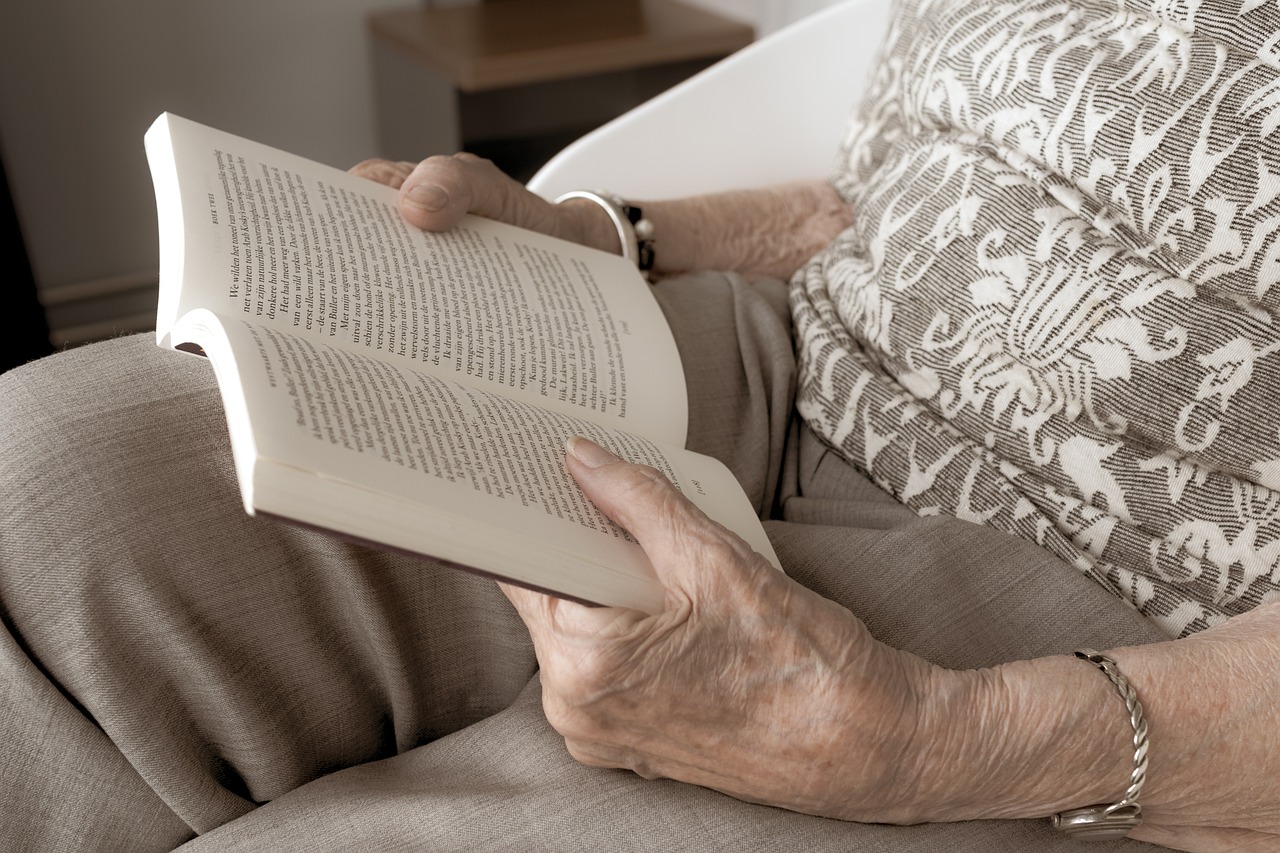
Creating a Safe Space
Creating a safe space for your senior pet is not just about physical comfort; it's about establishing an emotional sanctuary where they can feel secure and relaxed. Think of it as their very own retreat, a cozy nook where they can escape the hustle and bustle of daily life. This safe haven can significantly alleviate their anxiety, especially when you're not around. Start by identifying a quiet corner in your home, away from the noise of the outside world. This area should be free from distractions, allowing your furry friend to unwind without interruptions.
One of the key elements in crafting this safe space is the inclusion of comfort items. These could be their favorite blanket, a beloved toy, or even an old piece of your clothing. Such items carry familiar scents and textures that can soothe your pet's nerves and provide them with a sense of security. Imagine how comforting it is for us to curl up with a favorite sweater on a chilly night; your senior pet feels the same way about their comfort items.
Additionally, consider creating a safe zone within this space. This could be a crate or a designated area that your pet can retreat to when they feel overwhelmed. Make this zone inviting by adding soft bedding and ensuring it’s easily accessible. You might even want to cover it with a light blanket to create a den-like atmosphere. This setup not only gives them a place to hide but also encourages them to associate this area with safety and comfort.
To further enhance this environment, try to minimize any potential stressors. This might mean using soundproofing techniques, such as heavy curtains or white noise machines, to drown out loud noises from outside. You could also consider implementing a consistent routine to help your pet feel more at ease. Just like humans, pets thrive on predictability, so keeping feeding times and walks on a schedule can significantly reduce anxiety levels.
Lastly, remember that the goal is to create an environment where your senior pet feels loved and secure. Regularly check in on them in their safe space, offering gentle reassurance and affection. This connection reinforces their sense of safety and helps them understand that they are not alone, even when you step out for a while. By investing time and effort into creating this safe haven, you’re not just helping to alleviate their anxiety; you’re also enhancing their overall quality of life.
- What are some signs that my senior pet is anxious?
Look for signs such as excessive barking, destructive behavior, changes in appetite, clinginess, or unusual vocalizations. - How can I help my anxious pet when I leave the house?
Creating a safe space with comfort items and a designated safe zone can help. Additionally, practicing gradual desensitization can be beneficial. - When should I seek professional help for my pet's anxiety?
If your pet's anxiety is severe or doesn't improve with home strategies, it's best to consult a veterinarian or animal behaviorist for tailored advice. - Can medication help with my senior pet's anxiety?
Yes, in some cases, a veterinarian may prescribe medication to help manage anxiety, especially if it's affecting your pet's quality of life.
Comfort Items
When it comes to alleviating separation anxiety in senior pets, play a pivotal role. Just like a favorite blanket can make us feel cozy and secure, familiar items can provide your furry friend with a sense of safety and warmth in your absence. Think about it: have you ever noticed how a child's favorite stuffed animal can help them drift off to sleep? The same principle applies to our pets.
Incorporating comfort items into your pet's environment can significantly reduce their anxiety levels. These items can range from their beloved toys to soft bedding or even a piece of your clothing. The key is to select items that carry a sense of familiarity and security for your pet. Here are some ideas to consider:
- Favorite Toys: A beloved chew toy or plush can provide comfort and distraction when you're not around.
- Soft Blankets: A cozy blanket that smells like you can create a warm, inviting space for your pet.
- Your Clothing: An old t-shirt or a piece of your clothing can carry your scent, which is incredibly soothing for them.
- Calming Products: Consider using items like calming sprays or pheromone diffusers that can help create a serene atmosphere.
It's essential to rotate these comfort items occasionally. Just as we might tire of using the same blanket every night, pets can also benefit from a little variety. Introducing new items can keep their environment stimulating and engaging, which is crucial for their mental health.
Moreover, creating a dedicated comfort zone in your home can enhance the effectiveness of these items. This space should be a quiet retreat where your pet can feel safe and relaxed. By placing their comfort items in this zone, you provide them with a sanctuary that can help ease their anxiety when you leave.
Ultimately, understanding your senior pet's unique preferences and habits is vital. Spend some time observing what items they gravitate towards and how they react to different textures and scents. This attention to detail can make all the difference in crafting a comforting environment that reduces their anxiety and enhances their overall well-being.
Q: How do I know if my pet is anxious when I'm away?
A: Signs of anxiety can include excessive barking, destructive behavior, or changes in eating habits. Watch for any unusual behaviors that occur specifically when you leave.
Q: Can comfort items really help with separation anxiety?
A: Yes! Comfort items provide a sense of familiarity and security, which can significantly reduce anxiety levels in pets.
Q: How long does it take for my pet to adjust to being alone?
A: Each pet is different. Some may adjust quickly, while others may take weeks or even months. Gradual desensitization can help ease the process.
Q: Should I consult a veterinarian if my pet shows signs of anxiety?
A: If your pet's anxiety seems severe or doesn't improve with comfort items and training techniques, it's a good idea to consult a veterinarian for advice and possible treatment options.
Safe Zones
Creating a safe zone for your senior pet is one of the most effective strategies to help manage their separation anxiety. Just like humans, pets thrive in environments where they feel secure and comfortable. A safe zone acts as their personal retreat, a cozy nook where they can relax and feel protected while you're away. But how do you go about setting up this special space? Let’s dive into some essential elements to consider.
First and foremost, choose a location that is quiet and free from distractions. This could be a corner of a room or even a specific room that your pet is familiar with. Ensure that this area is away from the hustle and bustle of daily activities, such as the kitchen or living room. You want to create a sanctuary where they can unwind without the stress of loud noises or sudden movements.
Next, incorporate comfort items into the safe zone. Familiar blankets, favorite toys, or even a piece of your clothing can work wonders. These items carry the scent of home and provide a sense of familiarity, which can significantly reduce anxiety. You might also consider using a calming bed or mat to make the space even more inviting. A cozy spot can transform an ordinary corner into a haven of tranquility.
It’s also important to ensure that the safe zone is accessible at all times. Your pet should be able to retreat there whenever they feel the need, not just when you leave. This accessibility allows them to associate the area with comfort and safety, reinforcing the idea that it’s their personal space. You can even encourage them to use it by leading them there during moments of stress or anxiety.
Additionally, consider adding some gentle background noise to the area. Sometimes, a soft radio or a white noise machine can mask external sounds that might trigger anxiety. The idea is to create an environment that feels safe and soothing, where your pet can relax without being startled by sudden noises.
Finally, monitor how your pet interacts with this safe zone. You might need to make adjustments based on their preferences. Some pets may prefer a more enclosed space, while others might enjoy an open area where they can see what's happening around them. Pay attention to their behavior and be flexible in your approach. The goal is to create a space that truly feels like a sanctuary for your beloved senior pet.
- How do I know if my pet is using the safe zone? Look for signs such as your pet retreating to the area during stressful situations or spending time there when they need a break.
- Can I use a crate as a safe zone? Yes, if your pet is comfortable with a crate, it can serve as a safe zone. Just ensure it is set up with cozy bedding and familiar items.
- What if my pet refuses to go to the safe zone? If your pet is hesitant, try enticing them with treats or toys. Gradually encourage them to explore the area without forcing them.
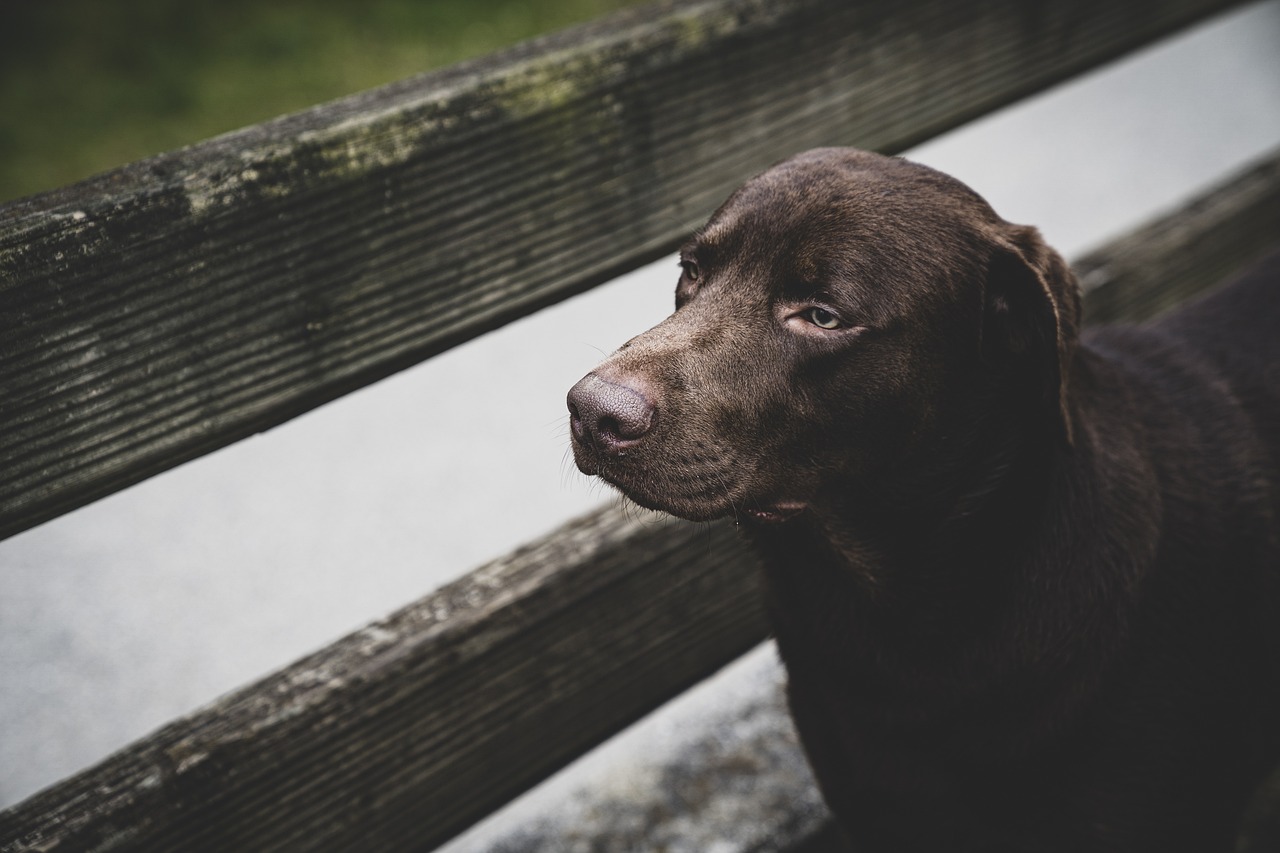
Training Techniques
Training your senior pet to cope with separation anxiety can be a game changer for both of you. Just like humans, pets can learn to adapt to new situations, and with the right techniques, you can help your furry friend feel more secure when you’re not around. One of the most effective methods is gradual desensitization. This approach involves slowly getting your pet used to being alone for short periods, gradually increasing the time as they become more comfortable. Think of it as teaching a child to swim; you wouldn’t throw them into the deep end right away, right? You start in the shallow end, allowing them to build confidence over time.
To implement gradual desensitization, you might begin by leaving your pet alone for just a few minutes while you step outside. When you return, make it a big deal! Celebrate their calm behavior with praise or a treat. Over time, you can extend the duration of your absences. This technique not only helps your pet learn that being alone is okay but also reinforces their confidence. Remember, consistency is key, and patience is essential. It’s all about small victories!
Another powerful method is positive reinforcement. This technique focuses on rewarding your pet for exhibiting calm behavior during your departures and arrivals. For instance, when you leave, if your pet remains calm instead of barking or whining, shower them with affection and treats when you return. This creates a positive association with your departures. You can also use a clicker or specific verbal cues to mark the desired behavior, which can make the training more effective.
Here’s a simple breakdown of how to utilize positive reinforcement:
- Identify calm behaviors: Notice when your pet is relaxed during your departures.
- Reward immediately: As soon as your pet exhibits calm behavior, give them a treat or praise.
- Be consistent: Make sure to reward every time they stay calm, reinforcing the behavior.
Incorporating these training techniques into your routine can significantly reduce your senior pet's anxiety. However, it’s important to recognize that each pet is unique. What works for one may not work for another. Therefore, be flexible and willing to adjust your approach based on your pet’s individual needs. If you notice that your efforts aren’t yielding results, don’t hesitate to seek professional help. Sometimes, a little extra guidance can make all the difference.
Q: How long does it take to see improvement in my pet's anxiety?
A: The timeline can vary greatly depending on the individual pet and the severity of their anxiety. Some pets may show improvement within a few weeks, while others may take months. Consistent training and patience are crucial.
Q: Can medication help with my senior pet's separation anxiety?
A: Yes, in some cases, a veterinarian may prescribe medication to help manage anxiety. This is often combined with behavioral training for the best results.
Q: Are there specific breeds more prone to separation anxiety?
A: Certain breeds, such as Labrador Retrievers, Border Collies, and Dachshunds, are known to be more prone to separation anxiety. However, any pet can develop anxiety regardless of breed.
Q: What should I do if my pet shows signs of distress when I leave?
A: If your pet shows distress, try to remain calm and avoid making a fuss during departures and arrivals. Gradual desensitization and positive reinforcement can help, but if the problem persists, consult with a veterinarian or animal behaviorist.
Gradual Desensitization
This article explores effective strategies for managing separation anxiety in senior pets, ensuring their comfort and well-being while you are away. Discover tips, techniques, and insights to support your furry companions.
Separation anxiety in senior pets can manifest in various ways. Recognizing the signs and understanding the underlying causes is crucial for effective management and support for your beloved animal.
Identifying the signs of anxiety is essential to address the issue. Common behaviors include excessive barking, destructive actions, and changes in appetite. This section will outline these symptoms in detail.
Senior pets may exhibit behavioral changes that indicate anxiety. This includes increased clinginess, restlessness, or unusual vocalizations. Understanding these changes helps in developing a tailored approach to their care.
Physical manifestations of anxiety can include pacing, trembling, and excessive grooming. Recognizing these symptoms is important for timely intervention and ensuring the pet's overall health and happiness.
Emotional signs of anxiety may involve withdrawal or aggression. Being aware of these indicators can aid in creating a supportive environment for your senior pet, reducing their stress levels.
The environment plays a significant role in a pet's anxiety levels. Factors such as noise, unfamiliar surroundings, and changes in routine can contribute to heightened anxiety in senior pets.
Establishing a secure and comforting environment can significantly alleviate anxiety. This section will provide tips on how to create a safe haven for your senior pet during your absence.
Incorporating familiar items, such as blankets or toys, can help soothe anxious pets. These comfort items can provide a sense of security and familiarity when they are alone.
Designating a quiet area in your home as a safe zone can help your pet feel more secure. This space should be free from noise and distractions, allowing them to relax when you're away.
Implementing training techniques can help reduce separation anxiety in senior pets. This section discusses various methods, including gradual desensitization and positive reinforcement, to create a more confident pet.
Gradual desensitization is a powerful technique that helps your senior pet adjust to being alone in a gentle and effective manner. The goal is to slowly increase the amount of time your pet spends alone, allowing them to build confidence and reduce anxiety over time. Think of it like training for a marathon; you wouldn’t just run 26 miles on your first day, right? Instead, you’d start small and gradually increase your distance.
To implement this method, begin by leaving your pet alone for just a few minutes. This brief separation helps them understand that you will return. As they become more comfortable, gradually extend the duration of your absences. For example:
| Time Away | Duration | Pet's Comfort Level |
|---|---|---|
| First Day | 5 minutes | Observe behavior |
| Second Day | 10 minutes | Calm, relaxed |
| Third Day | 15 minutes | More comfortable |
| Fourth Day | 30 minutes | Confident |
As you progress, it’s important to pay attention to your pet's reactions. If they seem anxious or distressed, don’t hesitate to scale back the time and take it slower. Remember, it's all about building trust and comfort. You can also incorporate short departures into your daily routine, such as stepping outside for a few minutes while your pet remains inside. This will help normalize the experience of being alone.
Moreover, using treats or toys can make these sessions more enjoyable. For instance, give your pet a special treat or a puzzle toy that keeps them engaged while you’re away. This positive association with your absence can significantly reduce anxiety. In essence, gradual desensitization is not just about leaving your pet alone; it's about teaching them that being alone can be a safe and even enjoyable experience.
In some cases, professional assistance may be necessary. This section will discuss when to consult a veterinarian or animal behaviorist for additional support and treatment options for your senior pet's anxiety.
A veterinary consultation can provide insights into potential medical issues contributing to anxiety. This approach ensures a comprehensive understanding of your pet's health and behavior.
Behavioral therapy can offer specialized strategies for managing anxiety. Working with a qualified professional can equip you with effective tools and techniques tailored to your senior pet's needs.
- What are the signs of separation anxiety in senior pets? Look for excessive barking, destructive behavior, and changes in eating habits.
- How long does it take to reduce separation anxiety? It varies by pet, but with consistent training, you can see improvements within weeks.
- Should I use medication for my pet's anxiety? Consult your veterinarian to discuss whether medication is appropriate for your pet.
- Can I prevent separation anxiety in my senior pet? Yes, early socialization and gradual acclimation to being alone can help prevent anxiety.
Positive Reinforcement
When it comes to managing separation anxiety in senior pets, is one of the most effective strategies you can employ. This approach is all about rewarding your furry friend for calm behavior, making them associate your departures with something pleasant rather than stressful. Imagine this: every time you leave, instead of worrying about what might happen, your pet thinks, "Hey, I get a treat when they go!" This shift in mindset can work wonders for their anxiety levels.
To implement positive reinforcement effectively, start by identifying what motivates your pet the most. It could be their favorite treats, a beloved toy, or even some quality cuddle time. Once you know what excites them, you can use these rewards to encourage calm behavior during your absences. For instance, when you leave the house, you might give them a special chew toy filled with treats. This not only distracts them but also reinforces the idea that being alone can be a good experience.
Here are a few tips to make positive reinforcement work for you:
- Timing is Key: Always reward your pet immediately after they display calm behavior. This helps them make the connection between their actions and the reward.
- Consistency Matters: Be consistent with your rewards. If you reward them sometimes and not others, it can confuse them and undermine your efforts.
- Gradual Progression: Start with short departures and gradually increase the duration as your pet becomes more comfortable. This helps build their confidence over time.
Additionally, consider using verbal praise alongside treats. A simple “Good boy!” or “Well done!” can be incredibly powerful. Pets thrive on our approval, and hearing your voice can provide them with the comfort they need while you're away.
It’s also essential to keep in mind that every pet is unique. What works for one may not work for another. Therefore, be patient and observant. If you notice that your pet is still anxious despite your efforts, it might be time to adjust your approach or consult with a professional. Remember, the goal is to create a positive association with your departures, making your senior pet feel safe and secure in your absence.
Q1: How long does it take for positive reinforcement to work?
A1: The time it takes can vary significantly from pet to pet. Some may respond quickly, while others might take weeks or even months to adjust. Consistency and patience are key.
Q2: Can I use positive reinforcement for other behavioral issues?
A2: Absolutely! Positive reinforcement is a versatile training method that can be applied to various behavioral issues, not just separation anxiety.
Q3: What if my pet doesn’t respond to treats?
A3: If treats aren’t motivating, try other rewards like praise, toys, or playtime. Every pet has different preferences, so find what excites your furry friend.
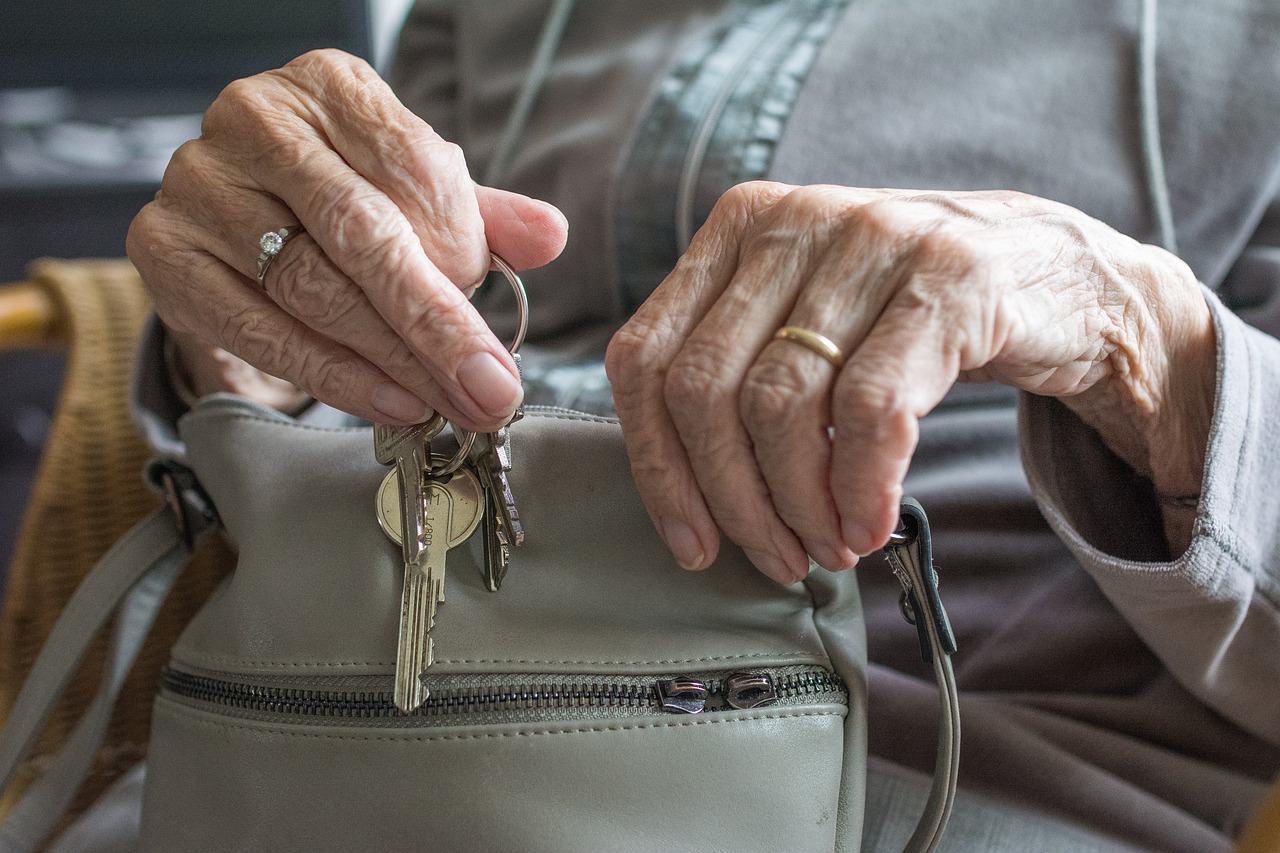
Seeking Professional Help
Sometimes, despite our best efforts, managing separation anxiety in senior pets can become overwhelming. If you find that your furry friend’s anxiety is not improving with the strategies you've implemented, it may be time to seek out professional help. Consulting a veterinarian or an animal behaviorist can provide you with tailored solutions and insights that go beyond basic techniques.
A veterinary consultation is often the first step. Your vet can assess your pet's overall health and rule out any underlying medical conditions that might be contributing to their anxiety. For instance, conditions like thyroid issues or chronic pain can exacerbate anxiety symptoms. By understanding the complete picture of your pet's health, you can make more informed decisions on how to proceed with their care.
Moreover, a veterinarian can recommend specific medications if necessary. Some senior pets may benefit from anti-anxiety medications, especially if their anxiety is severe. These medications can help to stabilize your pet's mood, making it easier for them to cope with being alone. However, it’s essential to use these under the guidance of a professional, as they will monitor your pet for any side effects and adjust dosages accordingly.
In addition to veterinary help, consider reaching out to a qualified animal behaviorist. These professionals specialize in understanding animal behavior and can provide you with specialized strategies tailored to your senior pet's unique needs. Behavioral therapy often involves a combination of training techniques, environmental modifications, and sometimes even medication. The goal is to equip both you and your pet with the tools needed to manage anxiety effectively.
When looking for a behaviorist, ensure they are certified and have experience working with senior pets. You might want to ask for recommendations from your veterinarian or look for reviews online. The right behaviorist can make a significant difference in your pet's quality of life.
In summary, seeking professional help can be a game-changer for managing your senior pet's separation anxiety. By combining veterinary care with behavioral therapy, you can create a comprehensive plan that addresses both the physical and emotional aspects of your pet's well-being. Remember, you’re not alone in this journey; there are experts ready to help you and your beloved companion.
- What are the signs that my senior pet needs professional help? If your pet's anxiety leads to destructive behavior, excessive vocalization, or significant changes in appetite, it's time to consult a professional.
- Can anxiety medications be used long-term? Yes, but they should be monitored by a veterinarian to ensure they remain effective and do not cause adverse side effects.
- How can I find a qualified animal behaviorist? Start by asking your veterinarian for recommendations or searching online for certified professionals in your area.
- Will my pet need to undergo tests before treatment? Often, yes. A veterinarian may suggest tests to rule out any medical issues that could be contributing to anxiety.
Veterinary Consultation
This article explores effective strategies for managing separation anxiety in senior pets, ensuring their comfort and well-being while you are away. Discover tips, techniques, and insights to support your furry companions.
Separation anxiety in senior pets can manifest in various ways. Recognizing the signs and understanding the underlying causes is crucial for effective management and support for your beloved animal.
Identifying the signs of anxiety is essential to address the issue. Common behaviors include excessive barking, destructive actions, and changes in appetite. This section will outline these symptoms in detail.
Senior pets may exhibit behavioral changes that indicate anxiety. This includes increased clinginess, restlessness, or unusual vocalizations. Understanding these changes helps in developing a tailored approach to their care.
Physical manifestations of anxiety can include pacing, trembling, and excessive grooming. Recognizing these symptoms is important for timely intervention and ensuring the pet's overall health and happiness.
Emotional signs of anxiety may involve withdrawal or aggression. Being aware of these indicators can aid in creating a supportive environment for your senior pet, reducing their stress levels.
The environment plays a significant role in a pet's anxiety levels. Factors such as noise, unfamiliar surroundings, and changes in routine can contribute to heightened anxiety in senior pets.
Establishing a secure and comforting environment can significantly alleviate anxiety. This section will provide tips on how to create a safe haven for your senior pet during your absence.
Incorporating familiar items, such as blankets or toys, can help soothe anxious pets. These comfort items can provide a sense of security and familiarity when they are alone.
Designating a quiet area in your home as a safe zone can help your pet feel more secure. This space should be free from noise and distractions, allowing them to relax when you're away.
Implementing training techniques can help reduce separation anxiety in senior pets. This section discusses various methods, including gradual desensitization and positive reinforcement, to create a more confident pet.
Gradual desensitization involves slowly acclimating your pet to being alone. This technique helps them build confidence and reduces anxiety over time, making separations easier for both you and your pet.
Using positive reinforcement techniques can encourage calm behavior during separations. Rewarding your pet for staying calm can help reinforce desirable behaviors and reduce anxiety in the long run.
In some cases, professional assistance may be necessary. This section will discuss when to consult a veterinarian or animal behaviorist for additional support and treatment options for your senior pet's anxiety.
When it comes to managing separation anxiety in senior pets, a is often a crucial step. It's not just about understanding behavioral issues; it’s also about ensuring there are no underlying medical conditions exacerbating the anxiety. For instance, conditions like arthritis or cognitive dysfunction can make a pet more anxious when left alone.
During a veterinary visit, the vet will likely conduct a thorough examination and may ask you a series of questions to assess your pet's behavior and health history. Here are some key points to discuss:
- Behavioral Changes: Note any recent changes in your pet's behavior, such as increased clinginess or vocalization.
- Physical Symptoms: Mention any physical symptoms you’ve observed, such as pacing or excessive grooming.
- Environmental Factors: Discuss any changes in your pet's environment that could be impacting their anxiety levels.
After the consultation, your vet may recommend a tailored treatment plan that could include behavioral therapy, medication, or both. Remember, the goal is to create a comprehensive approach that addresses not only the symptoms but also the root causes of your pet's anxiety.
Behavioral therapy can offer specialized strategies for managing anxiety. Working with a qualified professional can equip you with effective tools and techniques tailored to your senior pet's needs.
Q: What are the common signs of separation anxiety in senior pets?
A: Common signs include excessive barking, destructive behavior, changes in appetite, and unusual clinginess.
Q: Can separation anxiety be treated without medication?
A: Yes, behavioral modification techniques such as gradual desensitization and positive reinforcement can be effective.
Q: When should I consult a veterinarian about my pet's anxiety?
A: If your pet's anxiety seems severe or is impacting their health, it's best to consult a veterinarian for a comprehensive evaluation.
Q: How can I create a safe space for my senior pet?
A: Designate a quiet area in your home with familiar items like blankets or toys to help your pet feel secure when you're away.
Behavioral Therapy
When it comes to managing separation anxiety in senior pets, can be a game changer. This approach focuses on understanding the root causes of your pet's anxiety and implementing specific strategies to help them cope. Think of it as a tailored training program designed to address your pet's unique emotional needs. Just like humans, pets can benefit from a structured environment that fosters security and confidence.
One of the key elements of behavioral therapy is consistency. It’s essential to establish a routine that your pet can rely on, which can significantly reduce their anxiety levels. For instance, try to keep feeding times, walks, and play sessions at the same time each day. This predictability helps your pet know what to expect and when, which can be incredibly comforting.
Another important aspect of behavioral therapy is the use of desensitization techniques. This method involves gradually exposing your pet to the situations that trigger their anxiety in a controlled and safe manner. For example, if your pet becomes anxious when you leave the house, start by practicing short absences. Leave for just a few minutes and then return, gradually increasing the duration as your pet becomes more comfortable with your absence. Over time, this can help them learn that being alone isn’t something to fear.
Moreover, incorporating positive reinforcement during these training sessions can make a significant difference. Reward your pet with treats, praise, or their favorite toy when they remain calm during your departures. This not only reinforces good behavior but also creates a positive association with being alone. Imagine how much more relaxed both you and your pet will feel when they start to understand that being alone doesn’t mean being abandoned!
For some pets, it might be beneficial to work with a professional animal behaviorist. These experts can provide insights tailored specifically to your pet's needs and help you implement a comprehensive plan. They can also teach you advanced techniques that go beyond basic training, ensuring that you and your pet are on the same page. Remember, the goal of behavioral therapy is not just to manage anxiety but to empower your pet to feel safe and secure in their environment.
In summary, behavioral therapy is an effective method for addressing separation anxiety in senior pets. By creating a consistent routine, employing desensitization techniques, and using positive reinforcement, you can help your furry friend feel more at ease when you’re not home. Always keep in mind that patience and understanding are key components of this journey. Your senior pet deserves the best care, and with the right approach, you can make a world of difference in their emotional well-being.
- What are the signs of separation anxiety in senior pets? Look for excessive barking, destructive behavior, changes in appetite, and clinginess.
- How long does it take for behavioral therapy to work? The timeline can vary, but with consistency and patience, you may start to see improvements within a few weeks.
- Can medication help with separation anxiety? Yes, in some cases, a veterinarian may prescribe medication to help manage anxiety while you work on behavioral strategies.
- Is it possible for senior pets to overcome separation anxiety? Absolutely! With the right techniques and support, many pets can learn to cope with being alone.
Frequently Asked Questions
- What is separation anxiety in senior pets?
Separation anxiety in senior pets is a condition where they experience extreme distress when left alone. This can lead to various behaviors such as excessive barking, destructive actions, and physical symptoms like pacing or trembling.
- What are the common signs of anxiety in senior pets?
Common signs include behavioral changes like increased clinginess, restlessness, and unusual vocalizations. Additionally, physical symptoms may manifest as pacing, trembling, or excessive grooming, while emotional indicators can involve withdrawal or aggression.
- How can I create a safe space for my senior pet?
To create a safe space, designate a quiet area in your home free from noise and distractions. Incorporate comfort items like familiar blankets or toys that can help soothe your pet and provide a sense of security when you're away.
- What training techniques can help reduce separation anxiety?
Techniques such as gradual desensitization and positive reinforcement can be effective. Gradual desensitization involves slowly acclimating your pet to being alone, while positive reinforcement encourages calm behavior by rewarding them for staying relaxed during separations.
- When should I seek professional help for my pet's anxiety?
If your pet's anxiety is severe or persists despite your efforts, it may be time to consult a veterinarian or an animal behaviorist. They can provide insights into potential medical issues and offer specialized behavioral therapy tailored to your pet's needs.
- Can separation anxiety in senior pets be treated?
Yes, separation anxiety can be treated through a combination of behavioral techniques, environmental adjustments, and, in some cases, medication. A comprehensive approach tailored to your pet's specific needs can significantly improve their well-being.



